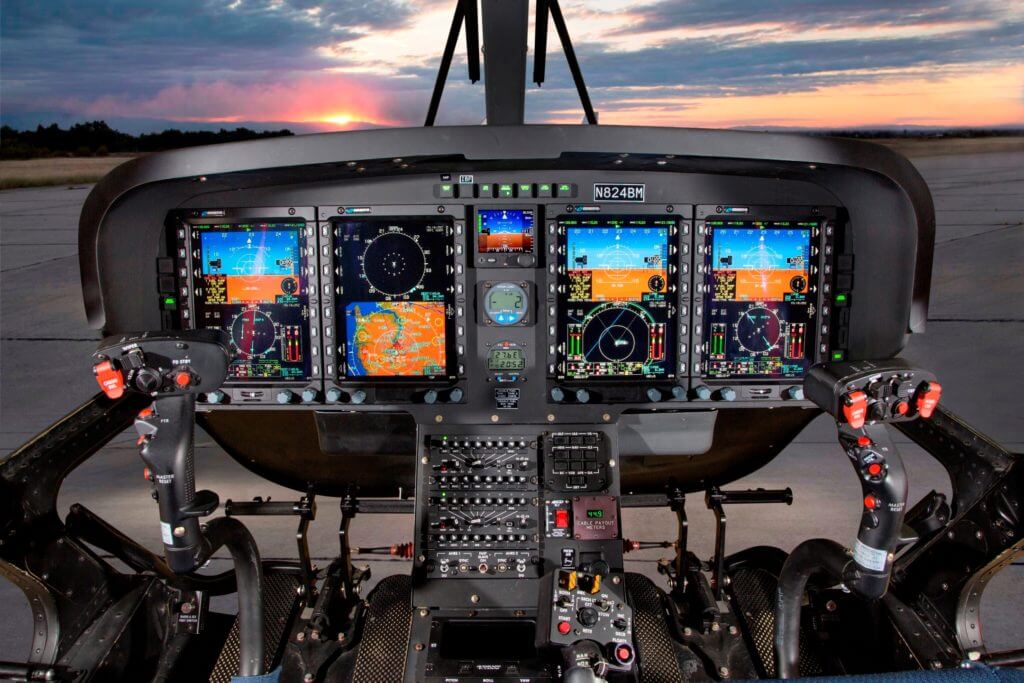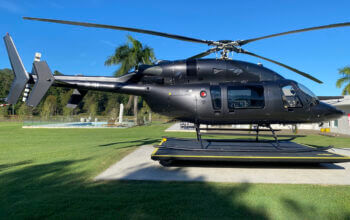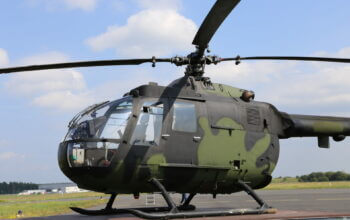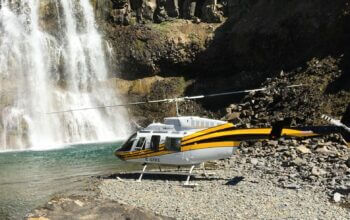On July 17, Leonardo’s TH-119 helicopter became the first single-engine helicopter in decades to achieve instrument flight rules (IFR) certification in the United States.

Leonardo had a strong motivation for getting the job done. The company is entering this variant of the AW119 in the U.S. Navy’s lucrative TH-73 (formerly TH-XX) training helicopter competition, for which IFR certification is a requirement. But Leonardo also had a unique advantage going into the certification process — the fact that the single-engine AW119 is derived from a twin-engine, IFR-certified helicopter, the AW109.
Since 1999, IFR certification of single-engine helicopters in the U.S. has been stymied by Federal Aviation Administration (FAA) guidance that requires applicants to demonstrate regulatory compliance using numerical safety analysis methods. As several industry organizations — including Helicopter Association International (HAI) and Vertical Flight Society (VFS) — explained in a 2015 white paper, the FAA set an extremely high bar when it selected the methodology and numeric values in this guidance.
Most single-engine helicopters are certified as Federal Aviation Regulations part 27 normal category rotorcraft, which have generally lower safety standards than part 29 transport category rotorcraft. For IFR certification, however, the numerical safety analysis requirements were equivalent — generally necessitating the type of redundant systems that are common on transport category helicopters, but rare on normal category ones.
The authors of the white paper argued for relaxing IFR certification standards for part 27 rotorcraft, pointing to the number of fatal accidents caused by visual flight rules (VFR) pilots’ inadvertent flight into instrument meteorological conditions (IMC). Because IFR flight is demonstrably safer than scud running, increasing the availability of IFR helicopters would yield safety benefits to justify the looser standards, they said. Moreover, they added, the recent availability of modern digital flight displays makes IFR flight easier and more accessible than ever.
“In the last decade or so, with the advent of glass cockpit avionics and the digital architectures in aircraft, it’s become much more affordable and much lighter weight to install [these] into small helicopters,” echoed TH-119 campaign manager Andrew Gappy. “Glass cockpits really provide an incredible amount of information.”
In June 2017, the FAA published a policy statement that eased numerical safety analysis requirements for various classes of part 27 rotorcraft, but did not address single-engine IFR requirements directly. That meant that when Leonardo decided to pursue IFR certification for its TH-119, the most straightforward path for doing so was still to conform with the redundant systems found on transport-category helicopters — including dual hydraulics, dual stability augmentation systems (SAS), and dual pitot-static systems, among others. Retrofitting these onto a helicopter certified without them would be a huge engineering challenge, but because of the 119’s lineage, most of the requirements, or at least provisions for them, were already in place.
“When we looked at the requirements for a part 27 aircraft, we were fortunate because we had an aircraft in the 119 that was a derivative of the 109. It has all the system redundancies that were required for IMC,” Gappy said.

One redundancy missing on the 119 was a second generator, but even here Leonardo lucked out. “We had actually installed [an] auxiliary generator for a customer up in Canada that does geological survey. So it’s an existing STC [supplemental type certificate] for the 119,” Gappy said. For IFR certification, Leonardo installed this auxiliary generator, which will automatically pick up the entire electrical load of the aircraft if the primary generator fails.
Coincidentally, around the time the Navy issued its TH-XX requirements, Leonardo was in the process of equipping its AW109 Trekker with a Genesys Aerosystems glass cockpit, which was readily transferred to the TH-119. For its submission to the Navy, Leonardo settled on a four-display cockpit layout as an optimal training configuration. However, the aircraft is certified for single-pilot IFR operations, and only the two displays on the right-hand side are required from the FAA’s perspective.
Gappy said that the developmental testing and FAA certification process for the TH-119 were relatively straightforward. While FAA Aircraft Certification Offices often provide STC applicants with “issue papers” addressing perceived deficiencies in their certification plans, “We had no issue papers, which speaks directly to the strength of what Genesys and Leonardo proposed,” Gappy said.
Nevertheless, he described the FAA as “very thorough” in its evaluation of the aircraft and IFR package. “Trust me, it was not lost on the FAA that signed off on this that this is the first single-engine IFR [helicopter] in decades!” he said.
According to Gappy, because the IFR approval is a civil certification of a civil aircraft, “there is nothing from a configuration or certification perspective that doesn’t avail it to the civil market.” Although he declined to comment on any specific plans Leonardo might have for the IFR package in the civilian world, he described the new market entry point for IFR operations as a “great thing.”
“It’s absolutely the safer way to fly,” he said. “Now that there’s a single-engine IFR-certified aircraft that the civil market can get their hands on, it enables more IFR flying.”
While Gappy — a former U.S. Marine Corps helicopter pilot who served in the HMX-1 Presidential Helicopter Squadron — is strongly in favor of expanding helicopter IFR operations, he said he would be wary about doing so at the expense of flight critical system redundancies.
“When you’re actually in IMC, the margin for failure is so much smaller because you don’t have reference to the ground,” he said, giving the example of how a hydraulics failure in a single-hydraulics aircraft could disconnect the SAS, greatly increasing the pilot’s workload in challenging conditions.
“It’s one thing to go out and say, yeah I can handle a hydraulics hardover in IMC, if that happened, if I don’t have another system to back it up. That’s fine that you can do it with thousands of hours. But what about the average pilot who’s only got a thousand hours or less? Because now you’re creating a potentially catastrophic situation which could have been easily handled by requiring a second hydraulics system. That’s where I think we have to be careful that we don’t inadvertently infuse more risk in it than we’re trying to avoid.”










The first redundancy which is missing is a second engine !
That’s why single engine rotorcraft was not IFR certified anymore. The criticality of an engine failure for a single engine rotorcraft in IMC is catastrophic. The probability of an engine failure doesn’t meet 10-9, which is required for a catastrophic severity classification.
Hence the certification is not consistent and understandable…
Lack of a second engine is not why the FAA hasn’t certified a single-engine rotorcraft in decades. Further, the loss of an engine in any single-engine aircraft in IMC will likely be catastrophic. There are thousands of single-engine piston airplanes that are IFR certified. Because of the great reliability of modern turbine engines, I would rather be flying a single-engine turbine helicopter in IMC. Kudos to Leonardo for taking the 119 to the next level and breaking the drought!